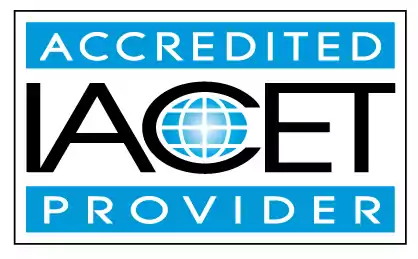Identify ways to help parents and infants/toddlers handle separation and attachment
Discover effective strategies to support parents and infants/toddlers in handling separation and attachment. Our expertise lies in identifying ways to help families navigate this challenging phase, ensuring a smooth transition for young ones. With a focus on early childhood education and child care centers, we provide essential guidance for nurturing strong parent-child connections.Trainings incorporating this outcome
CDA Subject Areas
Proficiency Level
Topic Areas
120 hours courses
45 hours courses
40 hours courses
2 hours courses
Related Outcomes
- Identify ways to help parents and infants/toddlers handle separation and attachment.
- Describe ways to interact with parents that will create a positive experience for both the parents and their children.
- Identify strategies to increase scientific inquiry in the infant and toddler classroom
- Identify strategies for providing appropriate care for infants and toddlers with chronic health issues
- Identify appropriate practices for identify and demonstrate an children: Identify importance of individual planning
- Identify strategies for integrating culture and diversity into an infant and toddler program
- Identify ways to handle hazards and bio-contaminants
- Define resilience and identify ways it helps young children overcome toxic stressors.
- Identify strategies to ensure appropriate infant and toddler supervision.
- Identify indoor activities to plan for infants and toddlers during inclement weather.
- Identify types of abuse in infants and toddlers.
- Identify types of abuse in infants and toddlers, how to report, and who are mandated reporters.
- Identify the components of a lesson plan for infants and toddlers.
- Identify specific techniques to help children cope with divorce and separation.
- Identify appropriate practices for identify and demonstrate an children: Identify examples of appropriate activities for different ages
- Identify the need to maintain individual feeding schedules for infants.
- Identify the types of barriers children's with disabilities/special needs face and ways to adapt curriculum to fit those needs.
- Identify different types of barriers for mixed ages with disabilities and ways to adapt curriculum to fit their needs.
- Identify safe practices with infants including SIDS, Abusive Head Trauma, and SBS.
- Demonstrate understanding of appropriate interaction with infants and toddlers.
Related Articles
- Harnessing Social Media for Childcare: Innovative Ways to Engage Parents
- Infant and Toddler Trainings
- The Importance of Infant and Toddler CDA Certification in Early Childhood Education
- How to Become an Infant and Toddler Teacher: A Step-by-Step Guide
- Lesson Planning for Infants and Toddlers
- Infant and Toddler Training Courses
- Why Every Parent and Educator Should Learn Adult, Child, and Infant CPR
- Infant Toddler CDA vs. Preschool CDA: Which One is Right for You?
- Get Your Infant and Toddler Certificate Online: A Step-by-Step Guide
- Infant Toddler CDA Black Friday Deal for Georgia
- Infant & Toddler Health Tips for the Chilly Season
- Building Up Infants and Toddlers
- Infant and Toddler Supervision
- Who needs to take the 45 Hour Infant and Toddler Curriculum Training
- Surviving Toddler Tantrums: A Guide for Parents Who Secretly Wonder If Their Kids Have a Future in Drama
- How to Handle Separation Anxiety in New Preschoolers: A Teacher's Guide
- Little Zen Masters: Ways to Incorporate Mindfulness into Play to Help Navigate Emotions
- Helping Kids Make Friends: A Guide for Parents
- Infant-Toddler CDA Certification: Your Key to Specializing in Early Childhood Care
- The Crucial Role of Positive Teacher Interactions in Infant and Toddler Development
 12 CEUs
12 CEUs